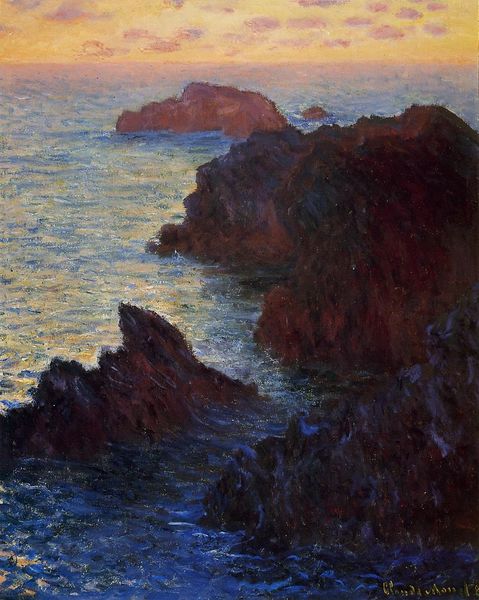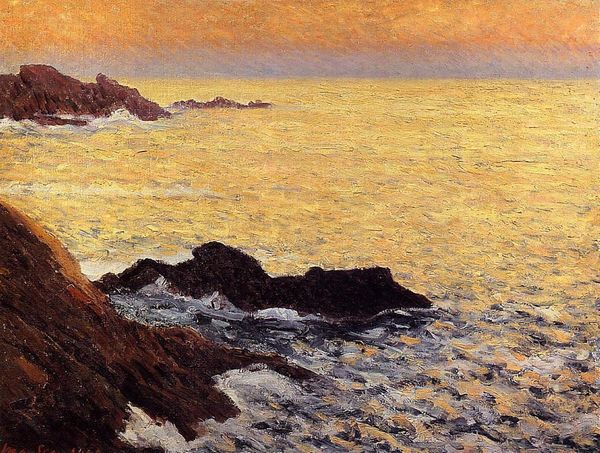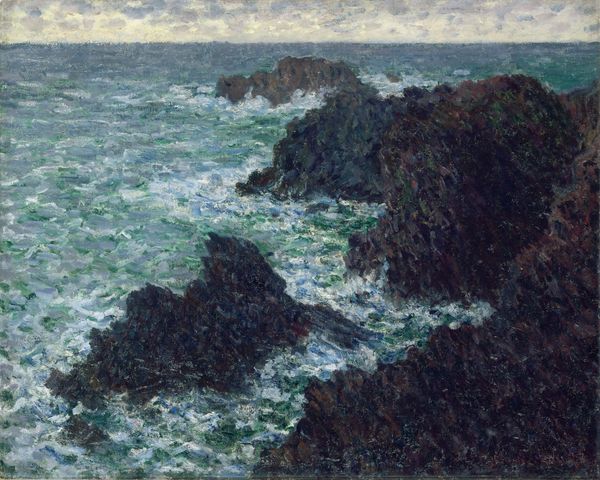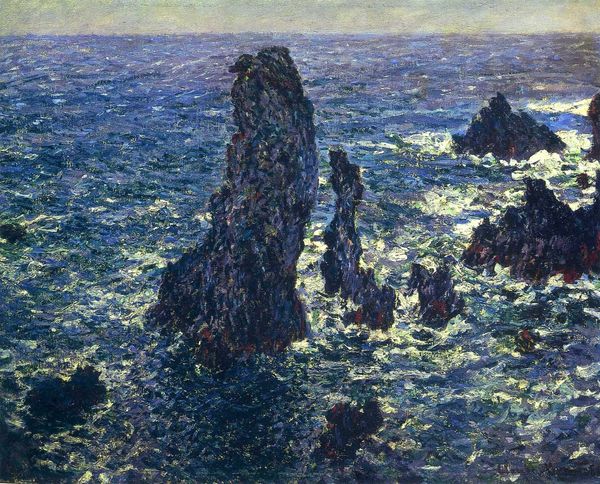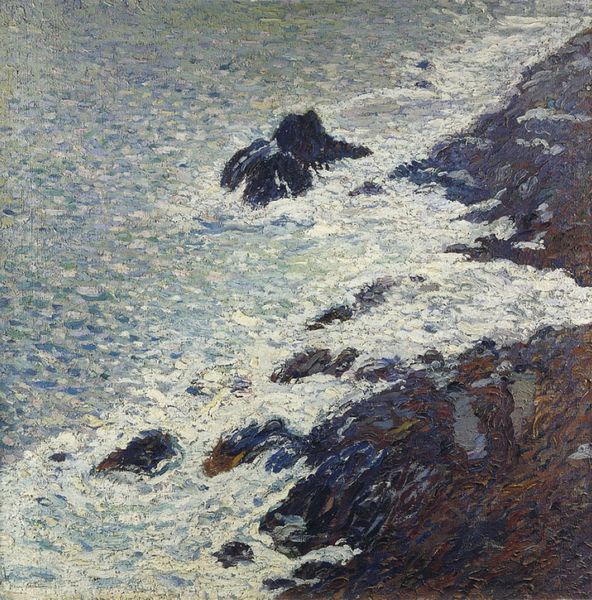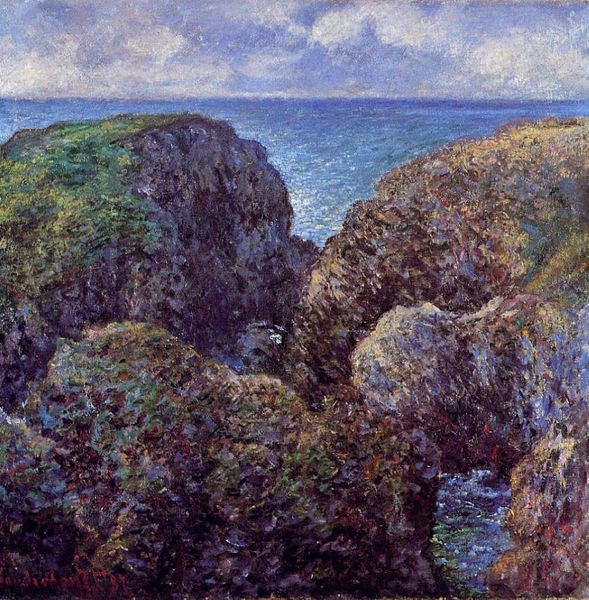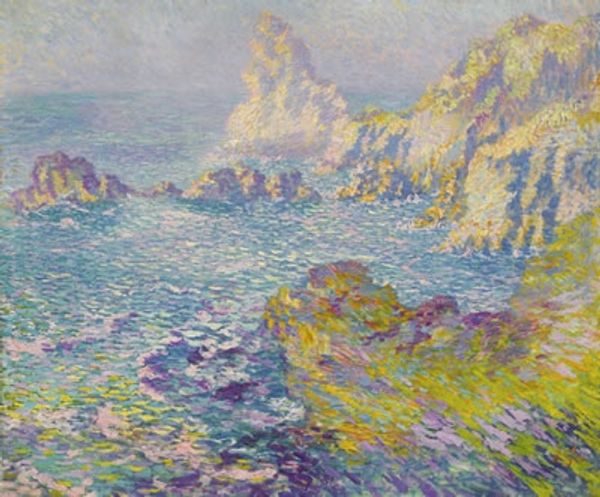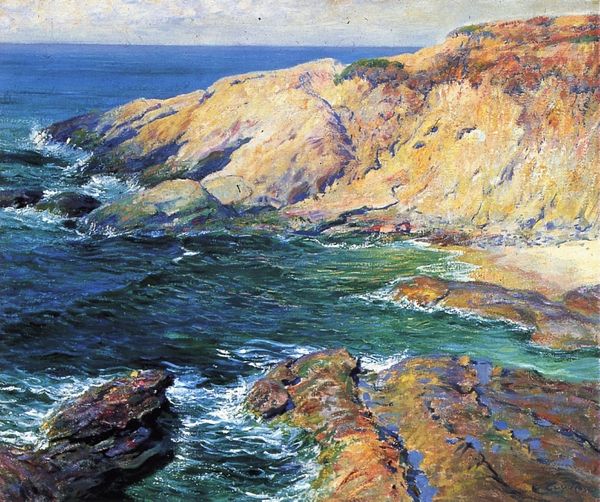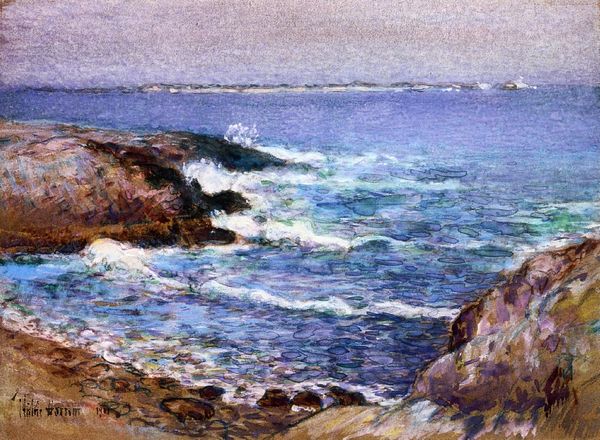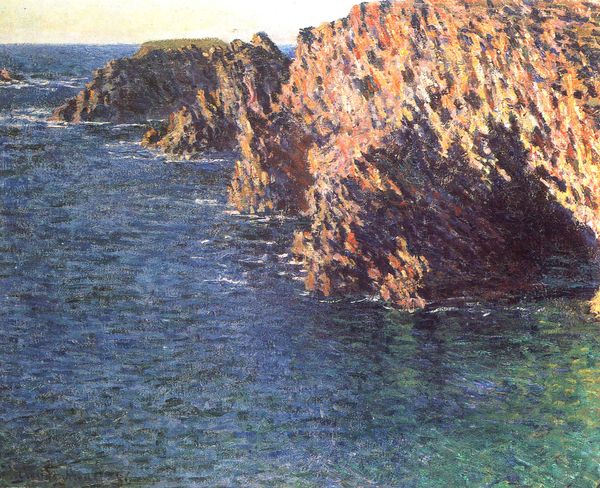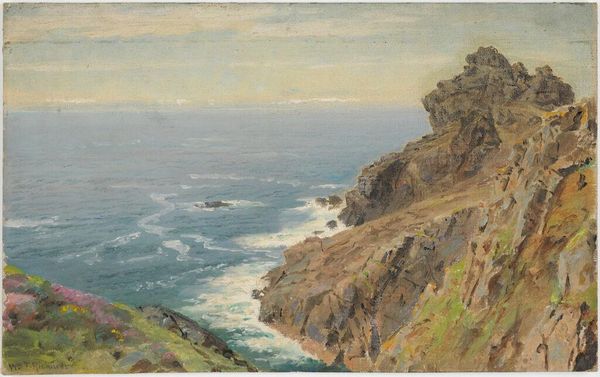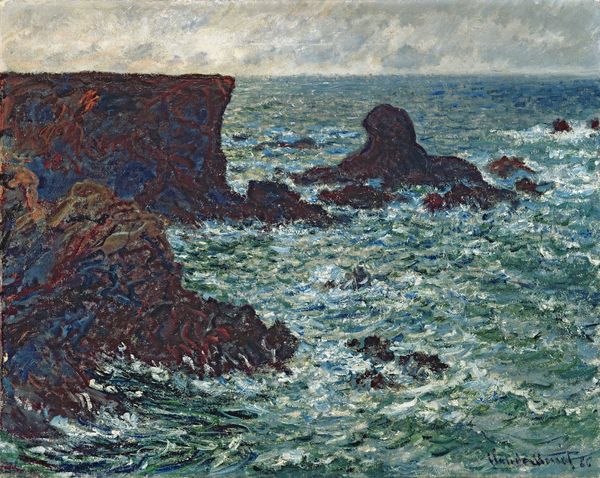
painting, plein-air, oil-paint
#
painting
#
impressionism
#
plein-air
#
oil-paint
#
neo-impressionism
#
landscape
#
impressionist landscape
#
nature
#
oil painting
#
seascape
#
modernism
Copyright: Public Domain: Artvee
Curator: Monet’s "Rocks at Belle-Isle, Port-Domois," painted in 1886, captures a rugged coastal scene. There's an almost primordial feel to this landscape, quite different from his more gentle water lily scenes. Editor: I find myself immediately drawn to the rough textures he's created with paint. It gives a real sense of the raw power and unforgiving nature of the sea against those steadfast rocks. Curator: Indeed. Monet’s time at Belle-Île marked a period where he embraced the wilder aspects of nature. There’s evidence he chose subjects to highlight the force of nature to appeal to a wider public interest in more rugged representations, and his dealer was also very enthusiastic about that direction. It coincided with changing aesthetic tastes too, with people moving towards more dramatic landscape subjects. Editor: Notice how he's structured the composition, though. The solid mass of the rocks dominates, really emphasizing their resilience. The waves become an active surface in light colors to contrast the stones dark, anchoring mass. The brushwork, so free, almost mimics the way water rushes around the rock formations. Curator: The play of light also really speaks to Monet's Impressionist exploration. The colors in the sky—soft pinks and grays—suggest the fleeting moment of either sunrise or sunset. This shows his acute observation of atmospheric conditions which in the French 19th century, as natural sciences and weather studies became more available, became a focal point in public education too. Editor: And the broken brushstrokes really create this shimmer across the surface, don't they? They are particularly evocative when reflecting light, especially where the water meets the rocks. The texture contrasts beautifully, soft, almost fluffy clouds and water against the rough, sharp, almost chaotic edges of the rocks. It suggests a kind of energy or an untamable force that seems quite potent. Curator: "Rocks at Belle-Isle" reflects the complex and increasingly urban audience that followed Monet’s career. Monet wasn't just depicting a scene. He offered a controlled engagement with the awe-inspiring aspects of the French coast for an increasingly mobile middle-class viewership. Editor: Looking closer at how Monet manipulates color and texture, one can discern his careful balancing act between accurate representation and subjective interpretation, offering insight into the mind of the artist himself, constantly negotiating structure with sensation.
Comments
No comments
Be the first to comment and join the conversation on the ultimate creative platform.
